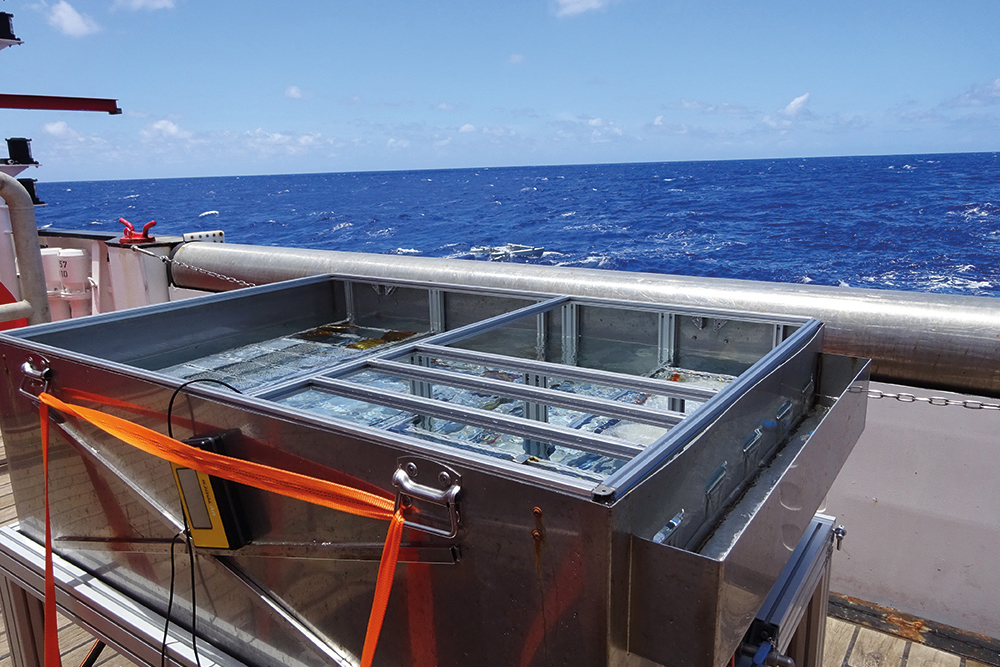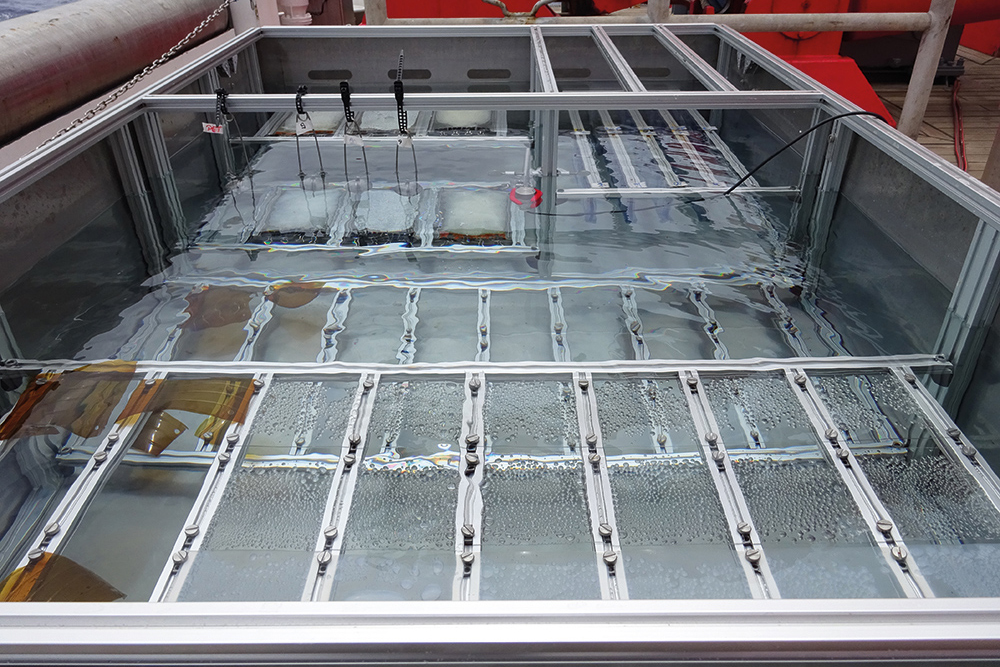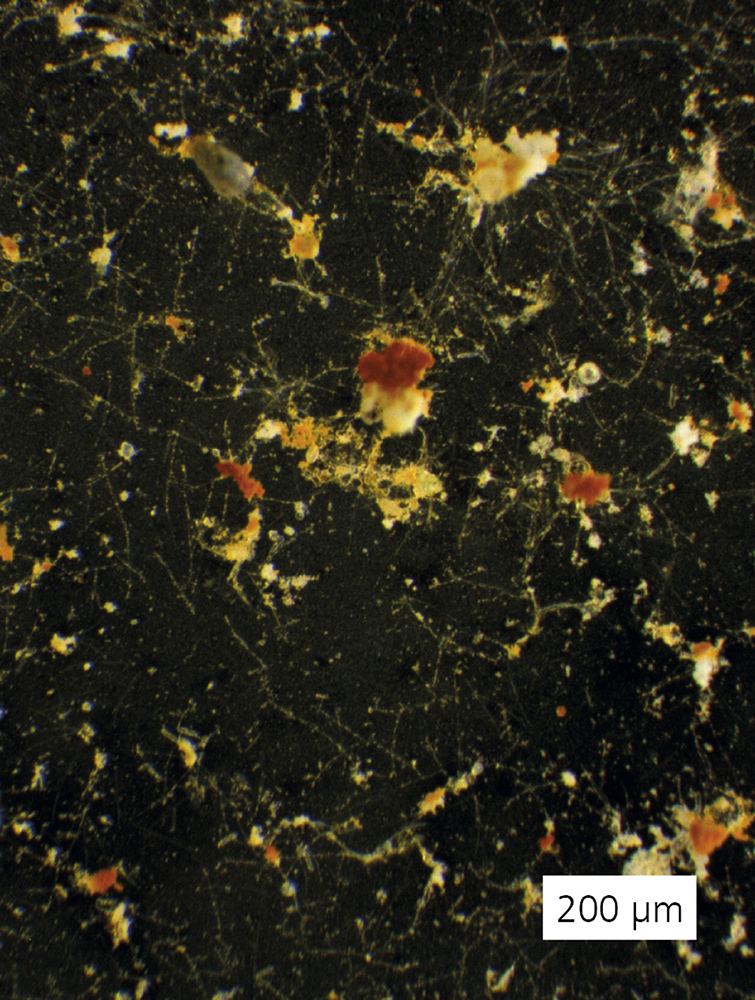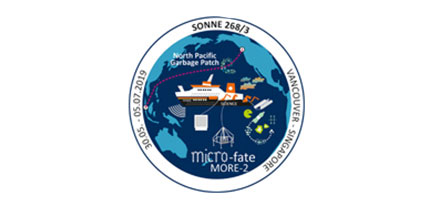


The public sees the increase in plastic waste in the sea as a major challenge. Scenarios that soon lead us to expect more plastic than fish in the oceans are both realistic and worrying. Important questions that need to be clarified in this context relate to polymer-type-specific risks resulting from the transport and fate of plastic as well as from its uptake and effect in organisms.
In order to understand this and to be able to develop prevention strategies in the future, a better understanding of how plastics weather and age is indispensable. Up to now, it has been possible to carry out test setups in the laboratory, e.g. for UV-induced weathering. The brittleness of materials increases; the wettability with water, quantified by contact angle measurements, changes and leads to differences in biofilm growth in quantity and quality.
In the real environment, weathering mechanisms are much more complex. Interactions between plastic surfaces and the contents of the surrounding water have to be considered, as does the fragmentation of the plastic debris into “microplastics” and possibly “nanoplastics”.
In order to validate the findings gained in the laboratory, plastic aging was investigated under realistic conditions on the Pacific Ocean during an expedition on the research vessel SONNE. In specifically designed mesocosms (Figure 1), polymers of varying chemical compositions (LDPE, PS, PET) and geometries (granules, plates) were continuously flooded with seawater, whose composition was analyzed while taking time and location into account (Figure 1). Depending on the UV radiation, which was specifically varied by exposing the materials in different water depths, as well as on the aging period, different aging mechanisms became clear.
The considerable biofilm growth after 28 days of weathering (Figure 2) increases the density of the polystyrene to less than 1 g/cm3 and thus contributes to the plastic particles moving towards the seabed. At the same time, the chemical composition (detection by FTIR analyses) and the specific surface roughness of the polymers change. The increase in brittleness is caused by structural changes and leads to an increase in the fragmentation and formation of microscale plastic particles.
The properties of the plastic aged under defined environmental conditions in the laboratory are compared to the samples taken from the Pacific Ocean, and thus a comparison of polymer types for risk assessment is possible. In the future, the standardized weathering conditions will be suitable for evaluating the degradation mechanisms of synthetic and biodegradable polymers.

